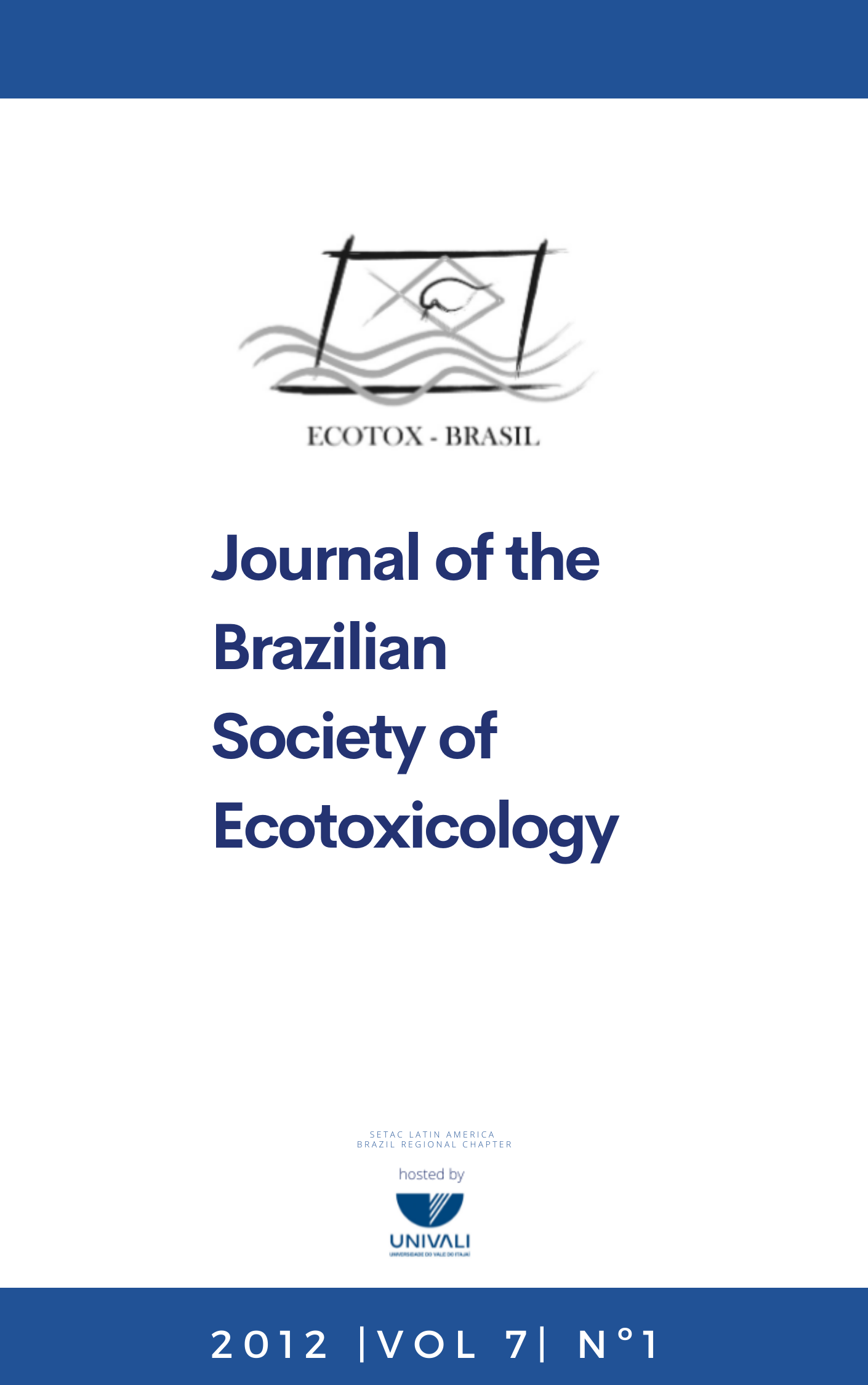Ecological risk analysis using the vegetable Bioindicator Lolium multiflorum
Abstract
This work was starting from January, 2005 to March, 2008, during 39 months of monitoring. This evaluation was developed around of Petroleum Refinery area, in one fixed sample station localized in Esteio (29°49’16” S 51°08’09”) cities, Rio Grande do Sul state, Brazil. The objective of this work was to develop and apply a model Ecological Risk Analysis (ERA) to classify the risks related to the atmospheric emissions in industrial areas using the vegetable bioindicator Lolium multiflorum. The proposed model for the ecologic risk evaluation associates the information from stressors’ effects, which come from sulfur compounded gases emissions, at the receptors, that is, the vegetable bioindicator tissue. It was evaluated in the vegetable bioindicators parameter; sulfur concentration accumulated in the plants, classified in the study as “answers data”. These were linked to the SO2 atmosphere concentration, which generate the “consequence data”; Toxic Potential Unit (TPU) and Exposure Toxic Unit (ETU). The integration was made using the statistics correspondence multiple variable analysis that demonstrate indications of risks for the vegetation localized around the refinery, when it was exposed an TPU higher than the unit.
Key words: atmospheric pollution, biomonitoring, Lolium multiflorum, risk assessment, sulphur.
Downloads
Downloads
How to Cite
Issue
Section
License
Copyright © 2006 ECOTOX-Brasil
Copyright notice: It is a condition for publication that manuscripts submitted to this journal have not yet been published and will not be simultaneously submitted or published elsewhere. By submitting a manuscript, the authors agree that copyright for their article is transferred to the Sociedade Brasileira de Ecotoxicologia (ECOTOX-Brasil) if and when the article is accepted for publication. The copyright covers the exclusive rights to reproduce and distribute articles, including reprints, photographic reproductions or any other reproduction of a similar nature, including translations. No part of this publication may be reproduced, stored in a retrieval system or transmitted in any form or by any means, electronic, mechanical, photocopying, recording or otherwise, without permission of the publisher.
Notice: While every effort is made by the EEC, editors and editorial board to see that no inaccurate or misleading data, opinions or statements appear in this journal, they wish to make it clear that the contents of the articles and advertisements published herein are the sole responsibility of the contributors or advertisers concerned. Accordingly, the EEC, the editorial board and editors and their respective employees, officers and agents accept no responsibility or liability whatsoever for the consequences of any inaccurate or misleading data, opinion or statement.




